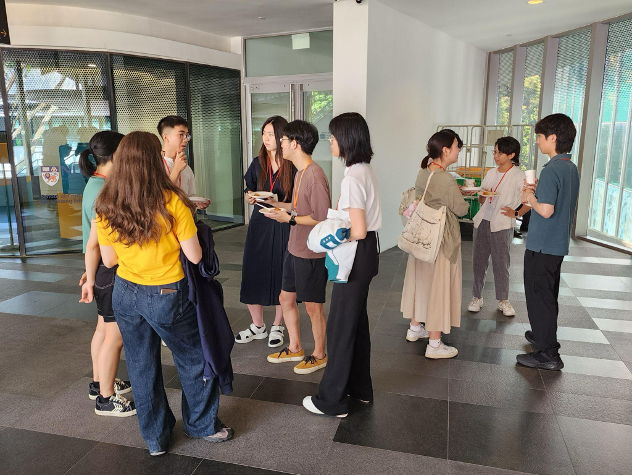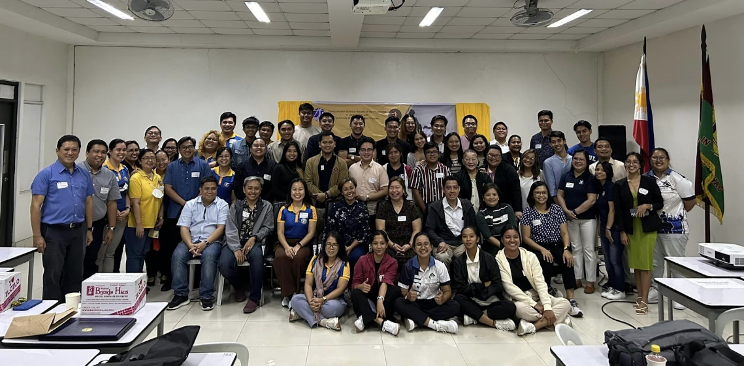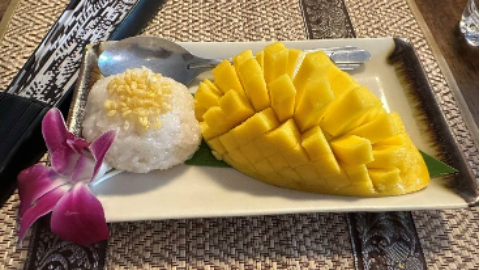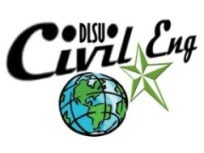2024 SIEP Japan
The annual DLSU Civil Engineering Student International Exchange Program (SIEP) happened last August 23, 2024 to September 1, 2025 in Tokyo and Nagoya, Japan. The SIEP was conducted and organized in collaboration with the prestigious Japanese universities namely Tokyo City University, Tokyo Institute of Technology, and Nagoya University. The program aimed to enhance the graduating students’ knowledge in civil engineering while immersing them in Japan’s cutting edge technologies and advancements as well as its rich culture. Moreover, the program also aimed to strengthen the ties between DLSU and the Japanese universities.
The program was participated by 40 BS CIV and BSMS CIV students from across all five specializations. The students were accompanied by the following faculty members: Dr. Mary Ann Adajar (DCE Department Chair), Dr. Joenel Galupino (SIEP Organizer and OJT Coordinator), Dr. Richard de Jesus (STE Specialization Head and Assistant Professor), Dr. Erica Elice Uy (OBQA Coordinator and Associate Professor), and Engr. Lawrence Valdez (Instructor, DLSU SIS).

DLSU CIV Students and Professors at Haneda International Airport
The first three days of the program focused on immersing students in Japanese culture through the various tours and cultural site visits. On the first day, students and professors arrived in Japan with excitement and anticipation. The group spent the rest of the day separately exploring the city of Tokyo. On Day 2, the group traveled to the viewing area at Lake Kawaguchi, a serene location at the base of the mountain, to take a peak of Mt. Fuji. The group indulged in a taste of local cruising, including a unique experience of trying basahi (Raw Horse), a delicacy in Japan. This was followed by a shopping spree at Gotemba Outlets, where the group splurged on clothing, toys, shoes, etc. while enjoying stunning views of Mt. Fuji.
Mt. Fuji View from (a) Lake Kawaguchi (b) Gotemba Outlets

SIEP Group Photo Outside a Local Restaurant in Lake Kawaguchi Area
On Day 3, the group toured Tokyo city proper, starting with a visit to Hachiko, exploring the bustling Shibuya Crossing, and attending mass at the peaceful Meguro Church. They experienced the vibrancy of Tokyo’s old-meets-new charm in Asakusa, where they visited the famous Senso-ji Temple. The day concluded with a scenic boat ride from Asakusa to Odaiba, showcasing Tokyo’s urban beauty from the waterways.
Hachiko Memorial (b) Shibuya Crossing
Meguro Church (b) Sensoji Temple
Views from Asakua-Odaiba Boat Ride

SIEP Group Photo at Asakusa

SIEP Group Photo at Odaiba
The academic portion of the SIEP started with a visit to Tokyo City Univesity’s Segayama Campus on Day 4. The day started with a brief campus tour at the university library and laboratory facilities of the TCU’s Civil Engineering department. Students had a chance to witness facilities that were not yet available at DLSU such as the centrifuge equipment. The visit concluded with an academic discourse through a seminar. Two DLSU CTM groups represented by Moa et al. and Su presented the findings of their thesis, engaging a thought discussion with their Japanese counterparts. Certificates of appreciation and tokens were given to the TCU hosts by Patricia Mae Niña Santos(CES EVP AY ‘23-’24), Ryanne Spencer Lim(BS CIV CTM Student), and Dr. Mary Ann Adajar(DCE Chair).

SIEP Group Photo at Tokyo City University

Presentation of Certificates and Tokens of Appreciation to the TCU Hosts
On Day 5, the group visited Tokyo Institute of Technology where they were welcome by Engr. Ronaldo S. Gallardo, former DLSU DCE Department Chair, and Dr. Alvin Varquez, DLSU Alumnus and former CES President. The program at Tokyo Tech began with quick visits at the university’s library, official merchandise store and bookstore, and its co-working spaces. The students also sat in a lecture hall and participated in a seminar on Transportation Engineering. In the afternoon, the students were assisted by Engr. Kyle Cabatit, DLSU Alumnus, and Tokyo Tech officials in the laboratory visits and tours. Lastly, the day concluded with a presentation of Tokyo Tech’s scholarship programs for their graduate studies. The certificates of appreciation and tokens were given to the Tokyo Tech hosts by Patricia Mae Niña Santos(CES EVP AY ‘23-’24), John Nathanael Cadiente (BSMS CIV CTM Student), and Dr. Mary Ann Adajar(DCE Chair).

Photo Op by the Famous Art Piece in Tokyo Tech
Students Viewing the Centrifuge

SIEP Group Photo at Tokyo Institute of Technology

Presentation of Certificates and Tokens of Appreciation to the Tokyo Tech Hosts
The sixth day of the program began with a half day visit to Nippon Steel, where students and faculty members witnessed firsthand the company’s groundbreaking yet simple innovations that contribute to building earthquake resistant structures. This visit offered students a valuable insight into how Japan’s construction industry integrates technology and materials to enhance structural safety in one of the most seismically active regions in the world. Students also tried the VR earthquake simulator of the company. The certificates of appreciation and tokens were given to the Nippon Steel hosts by Patricia Mae Niña Santos(CES EVP AY ‘23-’24), Raul Reyes Jr. (BS CIV STE Student and CES STE Representative AY’23-’24), and Dr. Mary Ann Adajar(DCE Chair). The remainder of the day was free for students and faculty to explore Tokyo at their own convenience and leisure.
Students Tried the VR Simulator for Earthquakes

SIEP Group Photo at Nippon Steel

Presentation of Certificates and Tokens of Appreciation to the Nippon Steel Hosts
On the 7th day, the group traveled from Tokyo to Nagoya via the iconic Shinkansen bullet train, allowing them to experience Japan’s efficient high-speed rail system. The group was greeted with heavy rains upon arriving at Nagoya due to a typhoon. Despite the weather conditions, the group remained optimistic and in high spirits as they continued to explore Nagoya’s shopping district.

SIEP Group Photo at Tokyo Station

SIEP Group Photo at Nagoya Station
Day 8 marked the last academic tour of the group to Nagoya University where they were joined by Nagoya University Alumni and DLSU Professors, Dr. Andres Winston Oreta and Dr. Rodolfo Mendoza Jr. The program at Nagoya University began with a warm welcome from Prof. Nakamura Sensei and representatives from their international studies office to discuss the graduate scholarship opportunities at their university. Moreover, students from Nagoya University’s Civil Engineering libraries discussed what they do and have to offer to prospective graduate studies. The DLSU students and faculty were elated to see Engr. Angelo Edora, a doctorate student at Nagoya University and former DLSU professor. The group then toured around the Disaster Mitigation Research Building where they were able to try various interactive displays around the first and second floor. After the warm welcome and insightful morning at the Disaster Mitigation Research Building, the group joined Nagoya University professors and students for lunch and had a quick chat with each other. In the afternoon, the group toured around the campus and the multiple laboratories. It was great to see the group immerse with the bridge set-up in one of their laboratories. The certificates of appreciation and tokens were given to the Nagoya University hosts by Antonio Bolaños (CES President AY ‘23-’24), Robert Pilapil (BSMS CIV CTM Student and CES CTM Representative AY’ 23-’24), Shaynn Ramos (BS CIV STE Student), and Dr. Mary Ann Adajar(DCE Chair).

Students Trying Out the Interactive Displays at the Disaster Mitigation Research Building
Nagoya University Civil Engineering Laboratories

SIEP Group Photo at Nagoya University
The group embarked on a Nagoya City tour on the 9th day, beginning with a quick visit to Nagoya Castle on a rainy morning. This was followed by a visit to Toyota Museum, where the group learned about the history of the automaker’s innovations and witnessed multiple car displays across generations.The tour ended with a comforting and hearty sukiyaki lunch, which was especially appreciated given the rainy weather.

SIEP Group Photo at Nagoya Castle
Fun Photo Op at Toyota Museum
The 10th day was a bittersweet day for the group, especially the students, marking the end of their SIEP journey. As the saying goes, “all good things must come to an end”. The students reflected on their experiences over the past 10 days and it ended in good faith. The SIEP has been an invaluable opportunity for learning, friendship, and cultural exchange, leaving a lasting impact on everyone involved.
Fun Photo Op with Matching Jackets at Chubu Centrair International Airport


















































.jpg)


